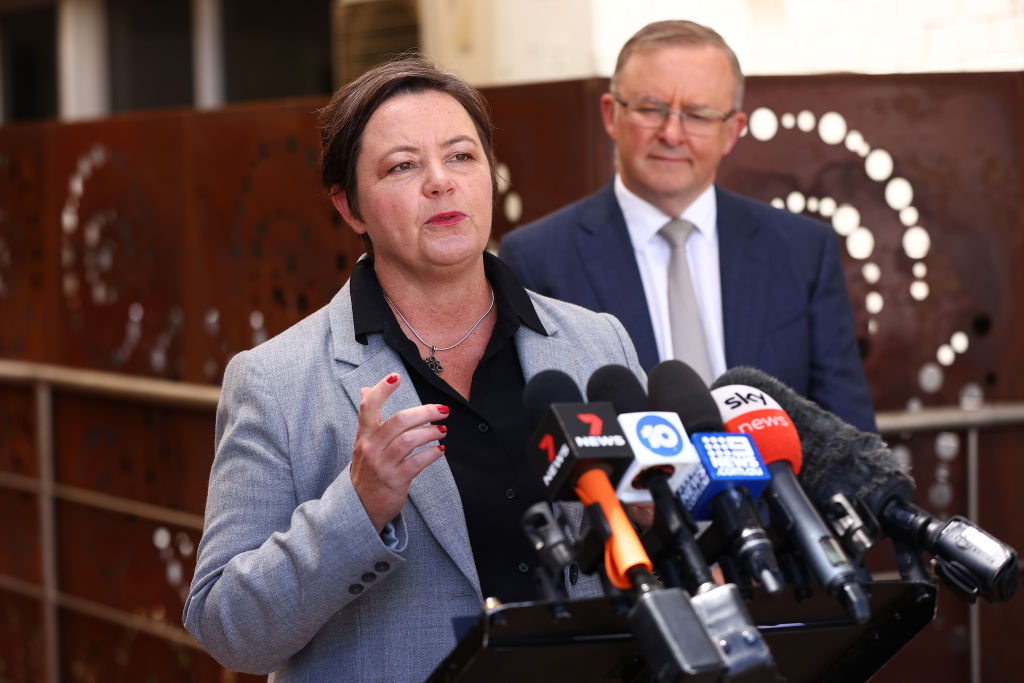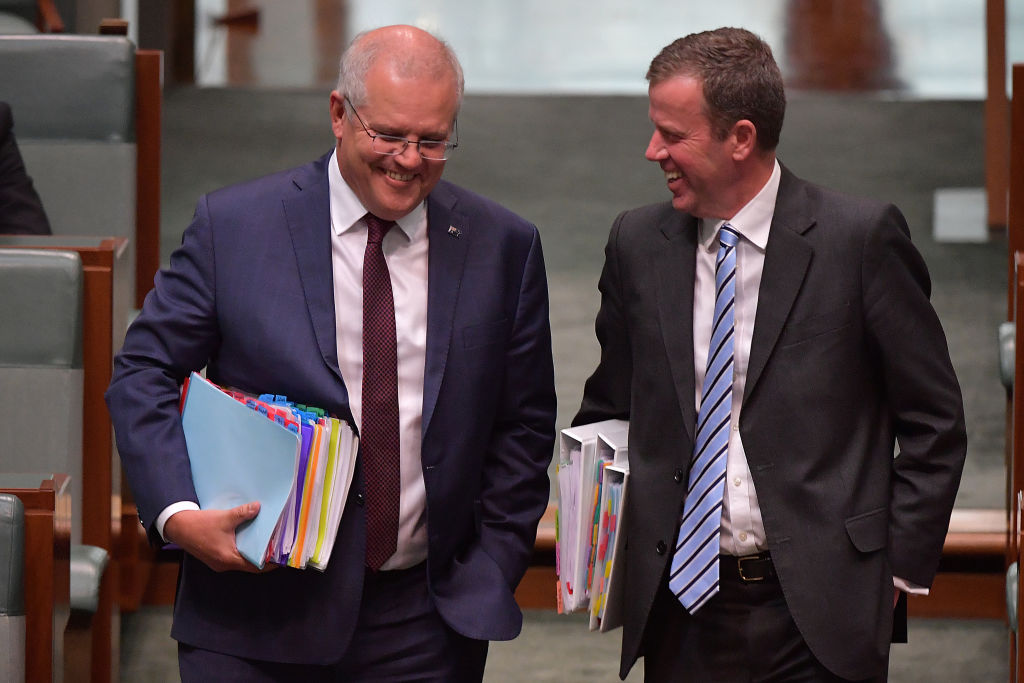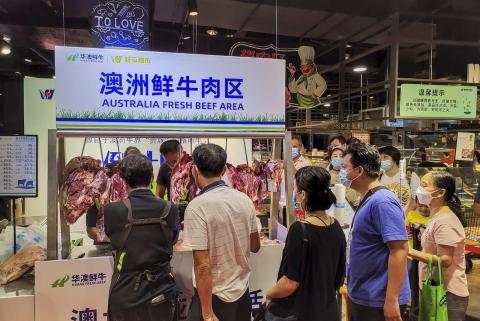Make or break
Trade matters haven’t made much of an impact in Australia’s election campaign, not surprisingly overshadowed by Solomon Islands in the foreign affairs debate and now interest rate rises in the domestic debate.
The Labor Opposition stepped up the rhetoric at its campaign launch on Sunday with the promise of a Future Made in Australia. Included was the vague commitment of “up to” $15 billion of loans, equity and guarantees across a range of industries for more domestic production and a predictable promise of more government local purchasing. But there is more specific rhetoric about making more trains, trams and ferries in Australia.
The Morrison government has largely stuck to talking up its pre-existing $2.5 billion Modern Manufacturing Strategy. That was bolstered in the March federal budget with new money for rural industry development under the rubric of Regional Accelerator Programs, which were a trade-off to junior Coalition partner the Nationals for last year’s climate change policy ahead of the Glasgow summit.
On Wednesday, Labor’s trade spokesperson Madeleine King injected the first new trade policy detail into the election, which in part builds on developments under the Coalition but also implies a Labor government will emphasise Asian opportunities more (more below). However, which ever party forms government will need to pay heed to the shifting sands of post-Covid industry policy in trading partners and multilateral policy makers.

As already noted here, the International Monetary Fund made a strong case for more diversification and substitutability rather retreat to domestic manufacturing in its latest World Economic Outlook. It argues: “Trade was fairly resilient in the pandemic – falling sharply initially, but then recovering rapidly in line with economic activity and demand, despite significant bottlenecks in trade logistics.”
So, it argues the moves to reduce dependence on foreign suppliers that has taken hold in several major countries including the United States since the pandemic may be premature and even result in less resilience given the rear vision view of the pandemic period. It cites Toyota’s response to the Fukushima tsunami as a benchmark for reducing supply chain risk through standardising components, better understanding suppliers’ inventory and regionalising supply chains rather than relying on one location. But some of these ideas were already in the Productivity Commission reports to the government last year. And the government has increasingly arguably devoted more attention to diversification than reshoring.
Friends in need
This is all fairly predictable IMF thinking. The more interesting intervention into this field in recent weeks was United States Treasury Secretary Janet Yellen’s elevation of “friendshoring” from new buzzword to Biden administration policy. Yellen told the Atlantic Council:
I think we’ve all recognised, in the aftermath of the pandemic, that our supply chains, while having become very efficient and excellent at reducing business costs, have not been resilient.
Her proposed response in more friendshoring would involve having a “group of countries that have strong adherence to a set of norms and values about how to operate in the global economy and about how to run the global economic system, and we need to deepen our ties with those partners.”
Australia has already gone down this path, at least at the announcement level, with the talks on supply chain cooperation with India and Japan, which may be helped by the conclusion of an interim trade agreement with India. But Yellen’s specific reference to critical minerals being a specific field ripe for friendshoring is particularly relevant to Australia’s efforts to make itself the starting point for a rare earths supply chain that avoids China.

Factory Asia rolls on
Meanwhile the latest regional assessments of how developing and East Asia are recovering from the pandemic argue that the region’s manufacturing-for-export strategy remains intact despite the increasing interest in both near and re-shoring production to protect critical supply chains.
Economists at the Asian Development Bank (ADB) say regional supply chains were not as disrupted by the pandemic for several reasons. There was not such a big shift to goods from services as, for example, was seen in the United States; the more upstream position of some Asian producers/economies protected from supply chain bottlenecks; and shipping costs rose less in Asia. Indeed, as Australia starts to confront inflation with this week’s interest rate rise, there is a striking chart in the ADB work that shows Australia as outlier for longer and more disruptive delivery times compared with a sample of regional and global economies.
High level trade missions to the key Asian markets are clearly needed after Australian long pandemic lockdown.
Even before the pandemic put reshoring on the global agenda, the economists at the ASEAN + 3 Macroeconomic Research Office (AMRO) had been warning that ASEAN countries could not keep relying on conventional manufacturing to absorb their growing populations and should focus more on skilling up for services. And they now say the pandemic has provided new impetus to the debate “by accelerating the adoption of automation and AI … Covid-19 has further narrowed the window for developing ASEAN economies to shift from labour-intensive and low-technology production to more capital-intensive and high-technology production.”
But despite describing the pandemic as “a crisis like no other experienced in the region” with long term economic scarring, they maintain there is still little likelihood of global value chains being shifted out of East Asia. They argue:
The deep and well-established GVCs in the ASEAN+3 region, especially in China, that were built and fortified over decades would be very costly, complex, and time-consuming to fully reconfigure.
And taking up the same line of thinking as the IMF, they say “resilience is still likely to come from more, rather than less, diversification involving more suppliers in more economies to mitigate disruptions when individual economies stop production for any reason.”
Going local
The multilateral economists might still be flying the flag for relatively globalised diversification, but Australia’s sovereign investment fund appears to be embarked on a more pessimistic retreat to home after a decline in its assets in the three months to March.
The Future Fund, which manages about $200 billion, says it plans to seek more local investments and reduce its exposure to listed companies as geopolitical tensions rise and markets get jittery over rate hikes. And chief executive Raphael Arndt almost seemed to be channelling Prime Minister Scott Morrison’s pessimistic 1930s wartime rhetoric in an interview this week where he reportedly talked about a world which resembled that period with populism becoming entrenched and countries taking more supply chains onshore.
“That means probably a bigger focus on more domestic exposure than what we’ve had in the past. We don’t take the free flow of capital around the world for granted anymore … The days of being able to earn returns just by taking risk in markets are ending,” he told Bloomberg Television, continuing to say:
The world has totally changed and all our financial models, all the things we learnt in business school around modern portfolio theory and capital asset pricing models – they’re all based on observations of the world since World War II and they're wrong.
This is all broadly consistent with the results of the fund’s review of the “new investment order” which it released last year in a quite striking venture into broader geopolitics that cut through more than the usual diplomatic speak. But given its successful longer term investment record, its withdrawal from emerging markets and nervousness about globalisation could have a broader influence on Australian policymakers.
Diversification 101
The striking thing about Labor’s new trade diversification policy is that while finding alternatives to China is prudent and sensible, the same old options keep coming to the surface.
And so, while India is listed as one of the key points in the four point diversification strategy, when asked King nominated Indonesia as “the greatest starting point” for diversification. India was “pretty much number one too” but there were more challenges involved in trading with it.

Nevertheless, there are some worthwhile ideas here for the essential implementation work following up the two relatively new trade agreements with Indonesia and India, although they largely build on themes under way. High level trade missions to the key Asian markets are clearly needed after Australian long pandemic lockdown, a detailed sectoral focus each year for the Australia-Indonesia economic minister meeting would help drive home the openings in the bilateral trade agreement, and the revamped export market development grants system needs fixing.
Trialling a pilot parallel version of the Australian Consortium for In-Country Indonesia Studies in India is an interesting idea although complex in India with more languages to consider. And keeping Indonesia alive as a key language in Australia is a more important long-term strategic priority.
Pushing diversification upstream to a 2040 Taskforce on trade opportunities and making all ministers responsible for exports are fairly standard sort of new policy ideas for an aspiring new government. But the core challenge remains to get more Australian businesses up to speed to take on the opportunities.
And backing Indonesia, Thailand and South Korea into the Comprehensive and Progressive (CPTPP) agreement for Trans-Pacific Partnership and India (back) into the Regional Comprehensive Economic Partnership is also worthy. But it largely ducks the immediate conundrum of the Chinese and Taiwanese applications to join the CPTPP.

